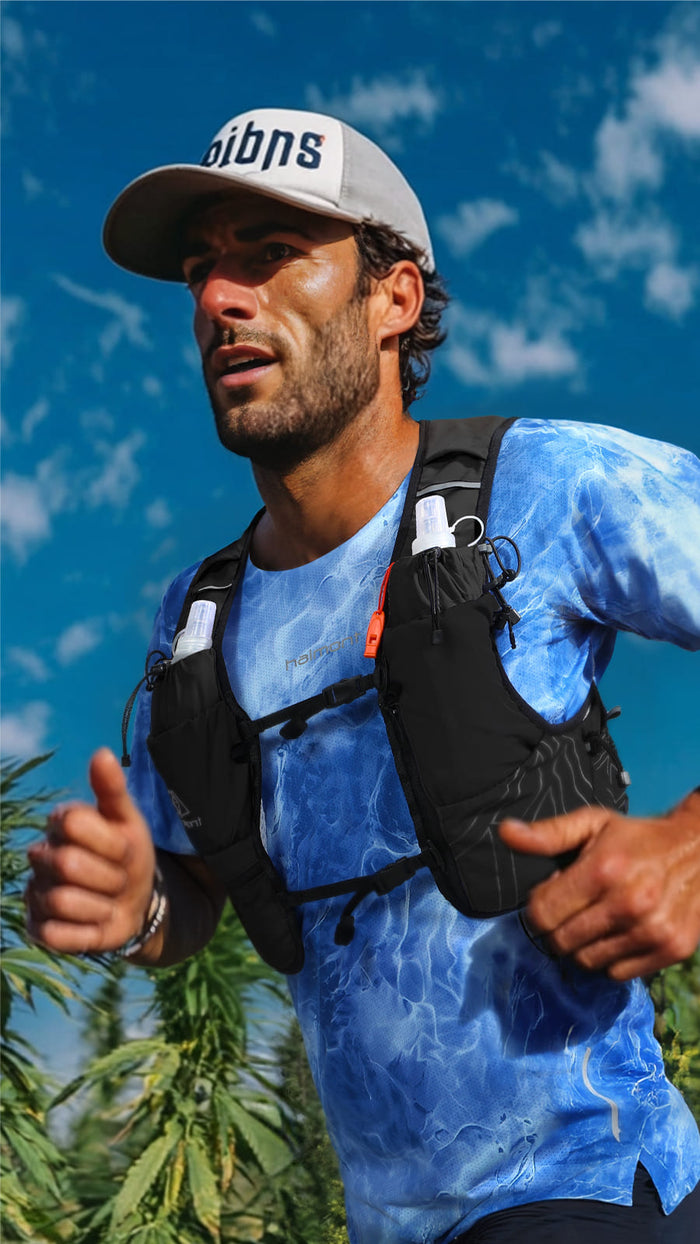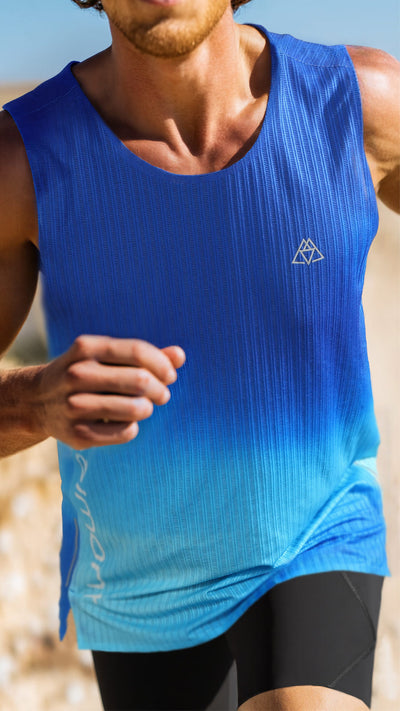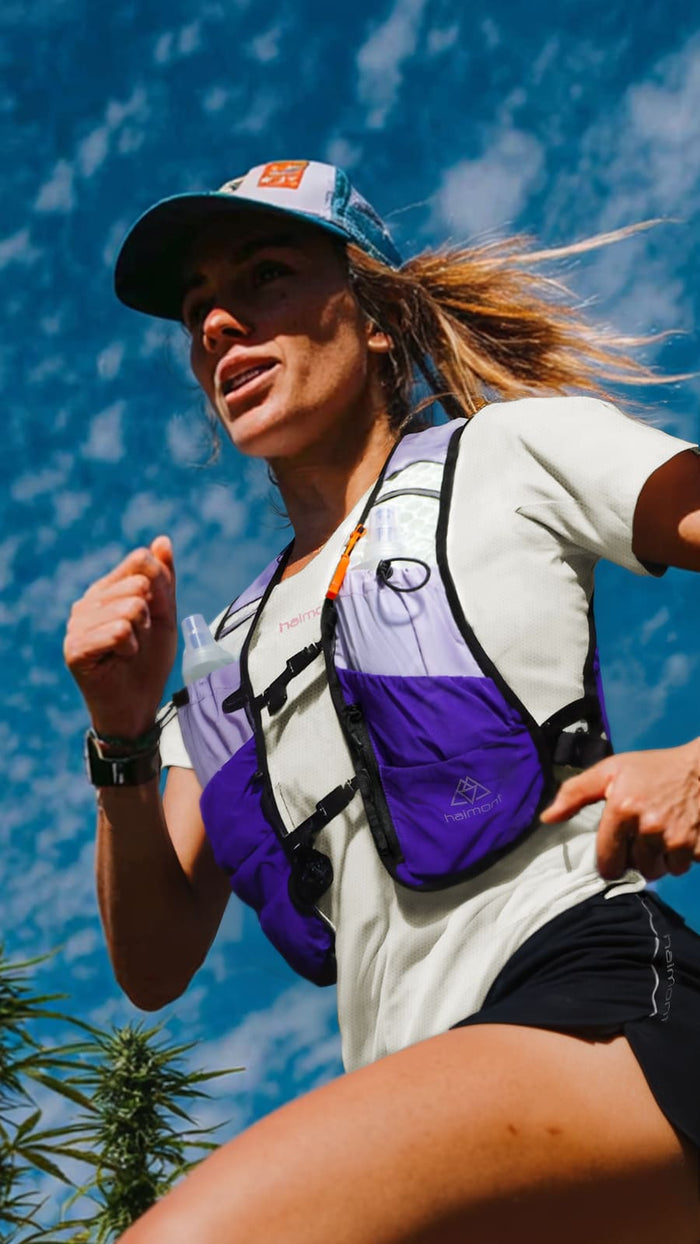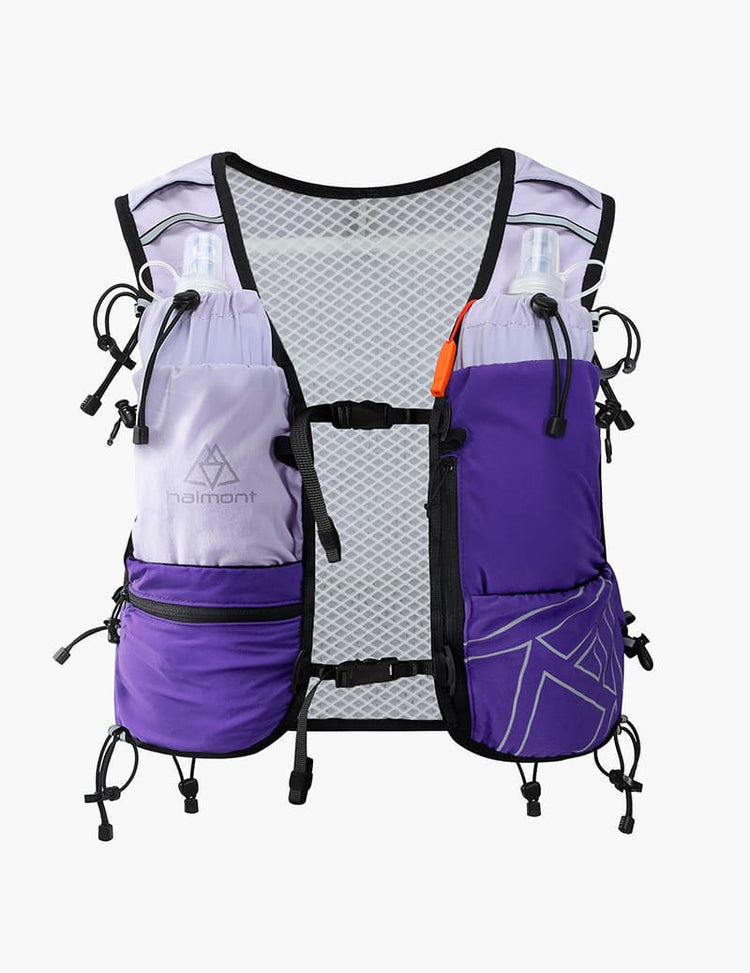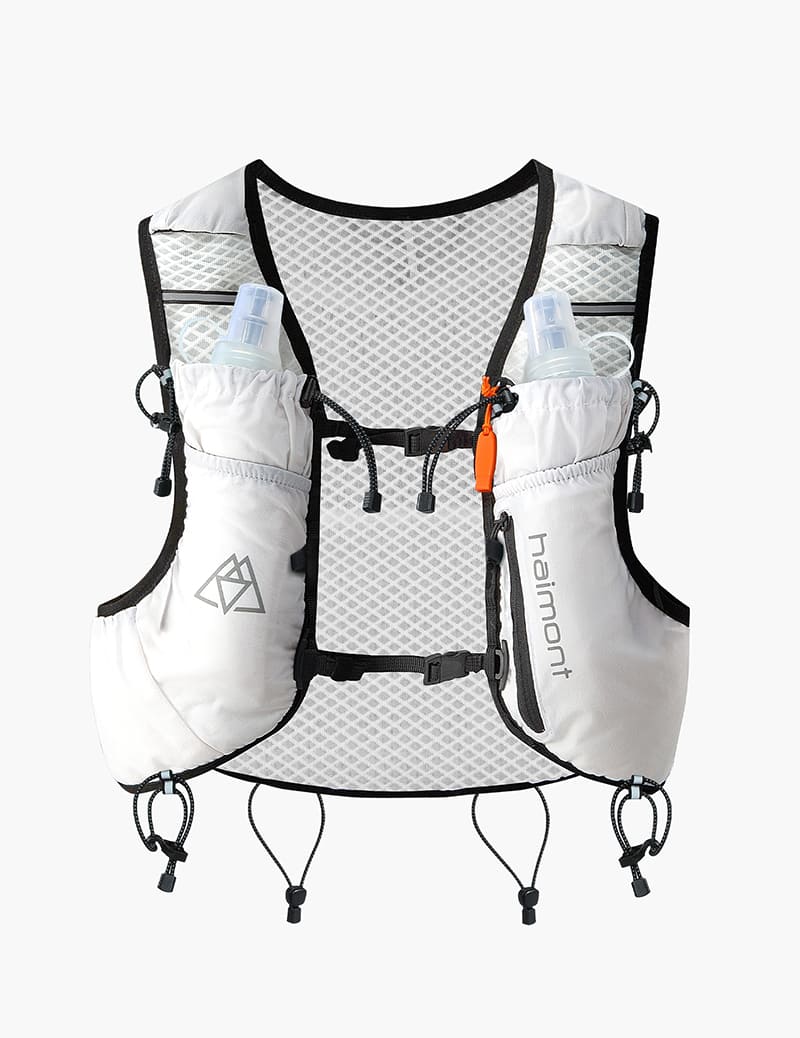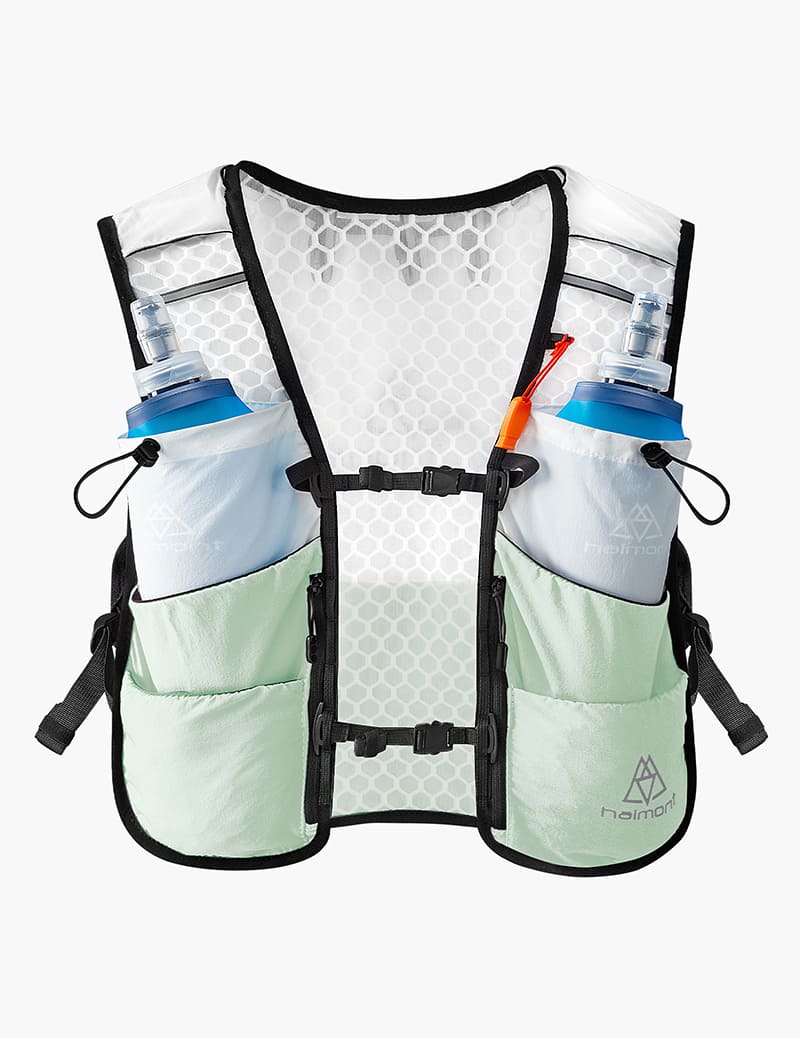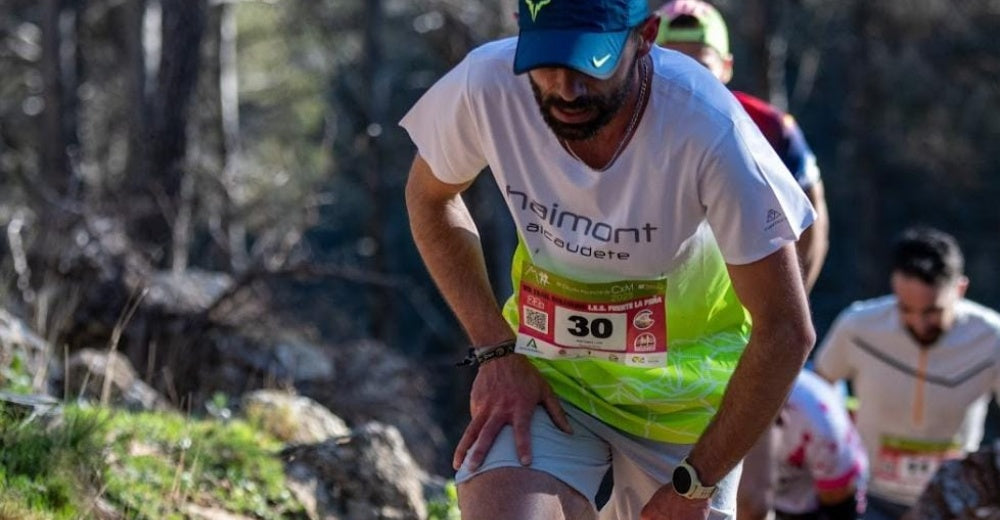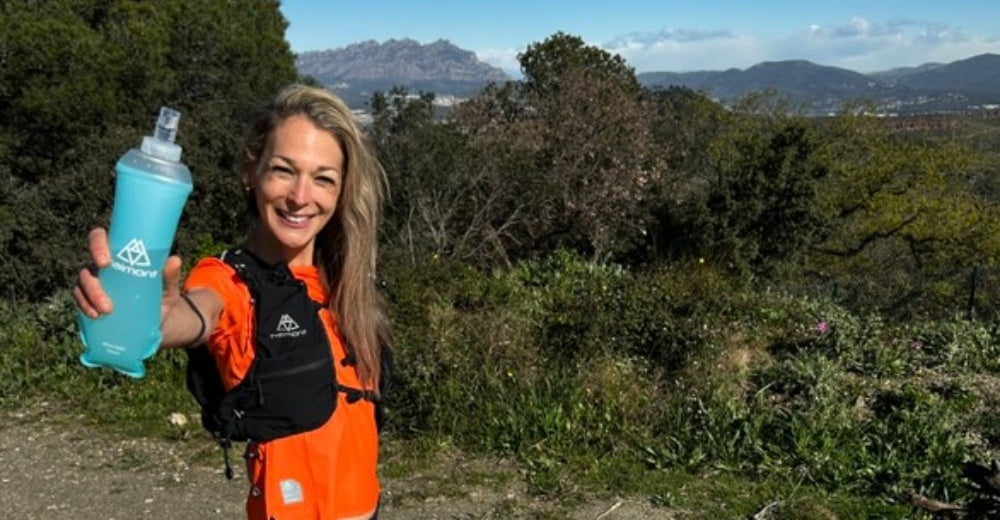Table of contents
In trail running, a reasonable nutrition and energy supply strategy is the core element to maintain physical fitness, delay fatigue, and improve competition results, which is directly related to the body's continuous output and recovery ability in long-term high-intensity exercise. Trail running is different from road running. The terrain is complex and changeable, covering steep slopes, mountain roads, muddy trails, and even technical descents. Muscles and joints will bear greater impact, and the energy and water consumed are far more than in ordinary running. Therefore, how to reasonably plan energy intake and electrolyte replenishment in a dynamic environment, combined with appropriate equipment configuration, has become a decisive factor affecting competition performance.

Energy consumption and supply requirements in trail running
Trail runninghas unique and higher requirements for energy consumption and supply. Scientifically understanding the body's metabolic characteristics in trail running and formulating reasonable supply strategies based on this are the keys to maintaining physical fitness and improving competition results.
Main sources of energy consumption
In trail running, the body's main energy supply pathways include glycogen energy supply and fat energy supply, but the functions and characteristics of the two are different at different stages:
Glycogen energy supply (carbohydrate metabolism)
Glycogen in muscles and liver is the most direct and efficient energy source in trail running.
Carbohydrates are metabolized quickly and have high energy efficiency, but the reserve is limited (about 1500-2000 kcal).
In moderate to high intensity trail running (such as climbing or sprinting), glycogen accounts for the highest proportion of energy supply.
In the early stages of trail running, the body mainly relies on glycogen for energy supply, but the reserve can generally only last for about 60-90 minutes, and then it must be continuously replenished through replenishment.
Fat energy supply (fat oxidation metabolism)
The fat energy supply speed is relatively slow, but the reserve is rich (even for athletes with low body fat percentage, the body's fat reserves can provide more than 40,000 kcal of energy).
In low to moderate intensity trail running (such as flat or downhill jogging), the body will gradually switch to fat energy supply to save glycogen.
In long-distance trail running (more than 2 hours), the body will prioritize mobilizing fat for energy supply, cooperate with glycogen metabolism, and maintain long-term endurance output.
Protein energy supply (emergency energy supply mechanism)
When running for a long time (more than 6 hours) or under extreme conditions, if glycogen and fat are insufficient, the body will break down the protein in the muscles for energy.
Protein metabolism has low energy supply efficiency and will lead to muscle breakdown and decreased strength, which is an undesirable way of energy supply.
By replenishing carbohydrates and fats in time, the occurrence of protein metabolism can be reduced, and muscles can be protected from being broken down.
Energy consumption at different intensities
The energy consumption of trail running is affected by many factors, including body weight, pace, climbing amount, and temperature. The following is the energy consumption at a typical trail running intensity:

The phenomenon of "getting hungrier the more you climb" in trail running: When going uphill, due to muscle contraction and increased heart rate, glycogen consumption is faster, and insufficient supply may lead to "hitting the wall" or hypoglycemia, weakness, dizziness and decreased concentration.
Trail running supply requirements at different metabolic stages
In trail running, the metabolic stage of body energy supply can be divided into the start-up period, continuous energy supply period and extreme metabolic period, and the supply requirements of each stage are different:
Start-up period (0-30 minutes)
In the early stage, the body relies on glycogen for energy supply, and the goal is to increase blood sugar levels and enhance muscle contraction quickly.
Supply strategy:
- Intake 30-50 grams of carbohydrates (such as an energy gel or banana) 10 minutes before the start.
- With 200-300ml of water, help glycogen enter the blood faster.
Continuous energy supply period (30 minutes-2 hours)
Glycogen reserves gradually decrease, and the body begins to mobilize more fat for energy.
It is necessary to maintain blood sugar stability through regular supply to avoid "hitting the wall" or physical decline.
Replenishment strategy:
- Intake 20-30 grams of carbohydrates (energy gel or energy bar) every 20-30 minutes.
- Take 1 electrolyte tablet every hour to replenish sodium, potassium, and magnesium to prevent cramps.
- Drink 100-150ml of water every 15-20 minutes.
Extreme metabolic period (more than 2 hours)
Glycogen reserves are almost exhausted, the body relies on fat for energy, and muscle fatigue increases.
The fat energy supply rate is slow, so additional fast-absorbing carbohydrates and proteins are needed to help maintain physical strength.
Replenishment strategy:
- Intake 30-60 grams of carbohydrates per hour (energy gel + energy bar + dried fruit).
- Intake protein (about 5-10 grams) every 2-3 hours (such as nuts, beef jerky, or protein bars).
- Regular intake of salty snacks (such as potato chips, nuts) helps maintain electrolyte balance.
Fluid and electrolyte replenishment requirements
In trail running, replenishment not only involves energy intake, but also needs to take into account fluid and electrolyte balance:
The hourly water intake is maintained at 400-600ml, which can be increased to 700-800ml in high temperature environments.
Take 1 electrolyte tablet or drink 500ml electrolyte drink every hour to replenish lost sodium, potassium and magnesium.
If cramps, dizziness or bloating occur, it may be a sign of electrolyte imbalance, and the replenishment ratio needs to be adjusted immediately.
Personalized replenishment recommendation
Because each trail runner has different metabolic rates, sweating, gastric tolerance and response to replenishment, it is necessary to repeatedly test the replenishment plan in pre-race training to find the replenishment rhythm and intake that suits you.
- Runners with high sweat rates: need to increase electrolyte and water intake.
- Runners with high metabolic rates: need to increase the frequency of carbohydrate intake.
- Runners with sensitive stomachs: need to reduce high-sugar concentration supplements and choose diluted drinks or purees.
Selection and use of energy gels and electrolyte tablets
In trail running, energy gels and electrolyte tablets are important supplements for maintaining physical fitness, delaying fatigue, and preventing cramps. Compared with solid food, energy gels and electrolyte tablets are absorbed faster, are easy to carry, and can quickly provide the body with the required energy and electrolytes at a high heart rate, helping the body maintain balance and maintain the normal functioning of the muscles and nervous system. Scientific selection and rational use of these supplements can effectively improve trail running performance and prevent discomfort caused by the "wall hitting period" and electrolyte imbalance.
Selection and use of energy gels
Energy gels are a highly concentrated carbohydrate supplement, usually with fructose, glucose, maltodextrin, etc., as the main ingredients. Some energy gels also contain caffeine, electrolytes or amino acids, to quickly provide the body with easily absorbed energy and stabilize blood sugar levels.
Main ingredients and functions of energy gels
Energy gels from different brands vary in ingredients and proportions. The following are common ingredients and their functions:

Types and recommendations of energy gels
Based on different ingredients and usage scenarios, common energy gels can be divided into the following categories:
Basic energy gels (main ingredients are glucose and maltodextrin)
- Suitable for short-distance or low-intensity trail running
- Fast energy supply but short duration
- Common brands: GU, Honey Stinger, Clif
Compound energy gels (added fructose, sodium, and potassium)
- Suitable for medium and long-distance trail running
- More stable energy release and better electrolyte balance
- Common brands: Maurten, SIS, Hammer
Caffeine energy gels (added 30-100mg caffeine)
- Improve concentration and reduce fatigue
- Suitable for the middle and late stages of the race to help maintain rhythm
- Common brands: GU, Clif Shot (high caffeine content)
High-energy gel (100-150 kcal per bag)
- Suitable for long-distance trail running or replenishment under extreme conditions
- High energy concentration, usually needs to be taken with more water
- Common brands: SIS, PowerBar
Natural energy gel (made of honey or natural fruit puree)
- Suitable for runners with sensitive stomachs or intolerance to artificial ingredients
- Slower but more lasting energy release
- Common brands: Honey Stinger, Spring Energy
Recommended timing and rhythm of energy gel intake
Trail running of different distances and intensities has different requirements for energy gel intake. Scientifically mastering the timing and rhythm of intake will help maintain physical output.
Short distance (less than 20KM)
- Consume 1 pack (about 20-30g of carbs) 15 minutes before the start to quickly build up energy reserves
- Start replenishing 1 pack every 30-40 minutes after 30-40 minutes
- If there is climbing or high-intensity sprinting, add 1 pack in advance
Middle distance (20-50KM)
- Consume 1 pack (20-30g of carbs) 15 minutes before the start
- Consume 1 pack (20-30g of carbs) every 20-30 minutes
- Consume about 60-90g of carbs per hour (2-3 packs of energy gels)
- If you feel a decrease in concentration or fatigue in the latter part of the race, you can try caffeine energy gels
Long distance (50KM-100KM)
- Consume 1 pack (20-30g of carbohydrates) 15 minutes before the start
- Consume 1 pack (20-30g of carbohydrates) every 20-30 minutes
- Supplement 60-90g of carbohydrates per hour (2-3 packs of energy gels or energy bars)
- Supplement high-energy or protein-containing energy gels every 2-3 hours
Ultra-long distance (over 100KM)
- Consume 1 pack (20-30g of carbohydrates) 15 minutes before the start
- Consume Take 1 pack (20-30 grams of carbohydrates) every 20-30 minutes
- Replenish about 90 grams of carbohydrates per hour (3 packs of energy gels or with other supplies)
- Combined with solid food (such as energy bars, nuts) to help prolong energy supply
- Moderately increase caffeine or branched-chain amino acid energy gels in the latter stage
Selection and use of electrolyte tablets
In long-distance trail running, the amount of sweat is large, and electrolytes such as sodium, potassium, magnesium, and calcium will be lost in large quantities with sweat, leading to muscle weakness, cramps, and even heat stroke and hyponatremia. Therefore, scientific electrolyte supplementation is also the key to maintaining physical fitness and safety during the competition.

How to choose electrolyte tablets?
Common brands include SaltStick, GU, and Hammer. The main ingredients are sodium and potassium. Some products also add magnesium and calcium to enhance the integrity of the supply. For high-temperature and high-intensity trail running, you can choose electrolyte tablets with higher sodium content to prevent dehydration and cramps.
The timing and dosage of intake need to be adjusted according to the amount of sweat and the distance of the race. In short-distance trail running within 20 kilometers, if the weather is not hot and the amount of sweat is not large, it is usually not necessary to take electrolyte tablets. However, in competitions over 20 kilometers, especially in high temperature and high humidity environments, it is recommended to take 1 to 2 electrolyte tablets per hour to maintain electrolyte balance. Runners who sweat a lot can increase the frequency of intake appropriately to prevent electrolyte loss and physical collapse.
Electrolyte tablets usually need to be taken with water. Each electrolyte tablet needs to be taken with 200-300 ml of clean water to help the ingredients dissolve and absorb quickly. If you do not replenish water in time after taking electrolyte tablets, it may cause the ingredients to accumulate, causing stomach discomfort or thirst.

Energy gel and electrolyte tablet combination strategy
The combination of energy gel and electrolyte tablet can achieve the maximum replenishment effect in trail running.
15 minutes before the start of the game, it is recommended to take 1 pack of energy gel and an appropriate amount of water to help the body build initial energy reserves. Take 1 pack of energy gel every 30 to 40 minutes, and take 1 to 2 electrolyte tablets every hour to maintain carbon water and electrolyte balance. In long-distance trail running, you can flexibly adjust the intake frequency according to the state of the body. For example, when cramps, dizziness, or fatigue occur, immediately replenish electrolyte tablets or high-energy gels.
It should be noted that the order of intake of energy gel and electrolyte tablets is very important. It is recommended to take energy gel first, and then take electrolyte tablets after 2 to 3 minutes to avoid overloading the stomach and affecting digestion and absorption.
Only by constantly testing and adjusting in training and finding a replenishment plan that suits your physical condition and competition needs can you maintain continuous physical output and the best competitive state in trail running.
Examples of trail running supply strategies for different distances
The energy consumption, muscle fatigue, and electrolyte loss of the body vary with the distance of trail running, so the supply strategy needs to be adjusted according to the distance, track conditions, and personal physical condition. The following are detailed supply examples for 20 kilometers, 50 kilometers, 100 kilometers, and more than 100 kilometers to help you maintain physical fitness, delay fatigue, and prevent physical collapse during the competition.
20 kilometers trail running supply strategy (about 1.5 to 3 hours)
20-kilometer is a short-distance trail run, which mainly relies on glycogen for energy supply. At the same time, it is necessary to pay attention to the appropriate amount of water and electrolytes to prevent dehydration and hypoglycemia.
Pre-race preparation:
- The day before the race, ensure sufficient carbohydrate water reserves and increase the intake of staple foods (such as rice and pasta).
- Take a pack of basic energy gel 15 minutes before the start, with 150-200 ml of water to help the body build initial energy reserves.
During the race:
- Take a pack of energy gel (about 20-30 grams of carbon water) every 30-40 minutes to help maintain blood sugar stability.
- Drink water every 20 minutes, 150-200 ml each time, to prevent dehydration.
- If the weather is hot or the amount of sweating is large, you can take 1 electrolyte tablet every hour to maintain electrolyte balance.
- In the final stage (the last 2-3 kilometers), you can choose energy gels containing caffeine to help refresh and improve sprinting ability.
Post-race recovery:
- Take foods rich in protein and carbohydrates (such as protein shakes, bananas, or energy bars) within 30 minutes after the race to help the body repair muscles and restore glycogen reserves.
50 km trail running supply strategy (about 5 to 8 hours)
50 kilometers is a medium-to-long distance trail race. The body needs to maintain an efficient energy supply for a long time. In addition to glycogen consumption, muscle and electrolyte loss also need special attention.
Pre-race preparation:
- Increase carbon water intake 2-3 days before the race to reserve muscle glycogen.
- Take a pack of compound energy gel 15 minutes before the start, which contains a combination of fructose and glucose, which helps to provide continuous energy.
During the race:
- Take a pack of energy gel (containing fructose + glucose, about 25-30 grams of carbohydrate) every 30-40 minutes to maintain stable blood sugar.
- Take 1-2 electrolyte tablets every hour to prevent electrolyte loss caused by excessive sweating.
- Drink 150-200 ml of water or electrolyte drinks every 20-30 minutes to maintain fluid balance.
- In a race of more than 4 hours, moderately increase solid food (such as energy bars, soft candies, or dried fruits) to provide additional fuel for muscles.
- Moderate intake of caffeine energy gel (in the 3rd or 4th hour) to improve concentration and muscle excitement.
Post-race recovery:
- Replenish carbon water + protein (3:1 ratio) within 30 minutes after the end of the race to help muscle repair and glycogen recovery.
- It is recommended to drink easily digestible carbohydrate and protein combinations such as chocolate milk, protein shakes, or rice + eggs.
100km trail running supply strategy (about 10 to 18 hours)
100km is an ultra-long-distance trail run. The body's glycogen reserves are not enough to support the entire race. It is necessary to maintain blood sugar levels and electrolyte balance through continuous supply, and pay attention to muscle repair and psychological state.
Pre-race preparation:
- Carbohydrate load 3-5 days before the race to increase muscle and liver glycogen reserves.
- Intake a pack of compound energy gel (containing fructose, glucose, and electrolytes) 15 minutes before the start, and drink 200 ml of water at the same time.
During the race:
- Intake a pack of energy gel every 20-30 minutes, containing fructose + glucose + electrolytes, to provide stable and continuous energy.
- Intake 2 electrolyte tablets per hour to ensure electrolyte balance and prevent cramps and hyponatremia.
- Drink 300-500 ml of water or diluted sports drinks per hour, adjusted according to the amount of sweating.
- During the 4th to 8th hour, increase the intake of solid food (such as energy bars, nuts, dried fruits, or energy blocks) to help maintain satiety and delay muscle consumption.
- In the second half (after the 8th hour), you can add caffeinated energy gels or cola to help stimulate the central nervous system, improve concentration, and running rhythm.
- Pay attention to the intake of branched-chain amino acids (BCAA) to help delay muscle fatigue and promote muscle repair.
Post-race recovery:
- Immediately after the end, take carbohydrates + protein (3:1 ratio), such as bananas + peanut butter, protein shakes or rice + eggs.
- Keep your body warm and relax as slowly as possible to prevent your body from cooling too quickly and causing muscle stiffness.

Refueling strategy for trail running over 100 kilometers (about 18 to 30 hours)
Events over 100 kilometers have entered the category of extreme endurance races. The body will consume a lot of glycogen and muscle protein. Long-term exercise is a great challenge to the body and mind.
Pre-race preparation:
- Carbohydrate load 5-7 days before the race to maximize glycogen reserves.
- Increase salt intake the day before the race to help the body store more water and electrolytes.
During the race:
- Take a pack of high-calorie energy gel (about 30-40 grams of carbohydrates) every 30 minutes.
- Take 2-3 electrolyte tablets every hour to ensure stable electrolyte levels.
- Supplement 400-500 ml of water or sports drinks every hour, adjusted according to the amount of sweating.
- Start taking solid food (such as rice balls, energy bars, beef jerky, etc.) after 6 hours to help the body maintain endurance output.
- In the middle and late stages of the race, take energy gels or amino acid drinks containing BCAA every 2-3 hours to help delay muscle fatigue.
- According to the psychological state and fatigue level, increase the amount of caffeinated drinks (such as cola or energy drinks) to help stimulate the nervous system and maintain a state of wakefulness.
Post-race recovery:
- Immediately after the end, take a high-protein and high-carbohydrate diet to promote muscle repair.
- Maintain a high-protein diet during the recovery period (within 48 hours), and help relax muscles through massage, stretching, and foam rollers.
Supply carrying and access strategy for a trail running vest pack
In trail running, supply efficiency is directly related to the state of the competition, so it is particularly important to design a reasonable supply carrying method.
Haimont Ultimate Hydration Companion for Long-Distance Trail Runners
Front pocket design:
- Put energy gels in the mesh or elastic pockets on both sides of the chest for easy access.
- Put electrolyte tablets in the small zippered pocket to avoid shaking or loss.
Side and back layout:
- Side or waist pockets can store spare energy gels and electrolyte tablets.
- The back pocket can be used to place additional supplies or waterproof equipment, but pay attention to weight balance to avoid affecting the center of gravity.
Soft flasks and soft reservoir compatible design:
- The soft flasks should be located in front of the chest for quick drinking.
- The vest pack is compatible with straws to ensure that it can be taken with one hand during the journey and reduce the stay time.
Avoid common problems:
- Do not concentrate all energy gels and supplies on the back or bottom, which is difficult to access and may cause uneven weight distribution.
- The pocket design is not reasonable, which leads to a drop in supplies or difficulty in access during running.
In trail running, each runner is a unique individual, with significant differences in physical condition, metabolic level, endurance performance, and adaptability to different supplies. Some runners need higher carbohydrate intake to maintain energy during long-distance running, while some runners may be more sensitive to sweet energy gels, resulting in excessive intake and gastrointestinal discomfort. Therefore, finding a set of personalized replenishment strategies that truly meet your needs is not only a test of physical fitness and experience, but also a tempering of self-perception and adaptability. Through continuous trial and adjustment in training, you can find out the most suitable type of energy gel, intake time and rhythm, and master the best time to replenish electrolytes, to maintain a stable physical output in long-distance trail running and avoid "hitting the wall" or cramps. More importantly, the situation on the field changes rapidly. The weather, track, and physical condition may be very different from those in training. Only by establishing a deep understanding of your own body in training and flexibly adjusting the supply strategy according to real-time conditions during the competition can you truly master trail running, perform at your best level, and enjoy the pleasure and sense of accomplishment of galloping in the mountains.


